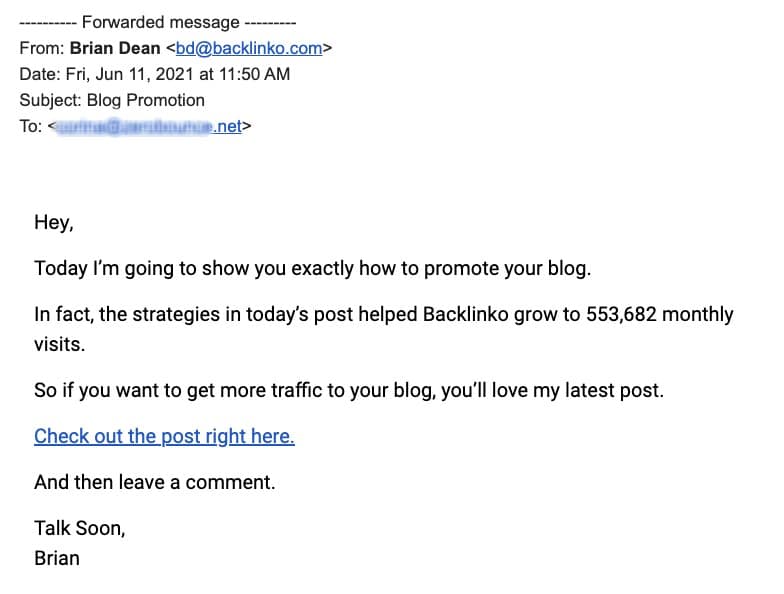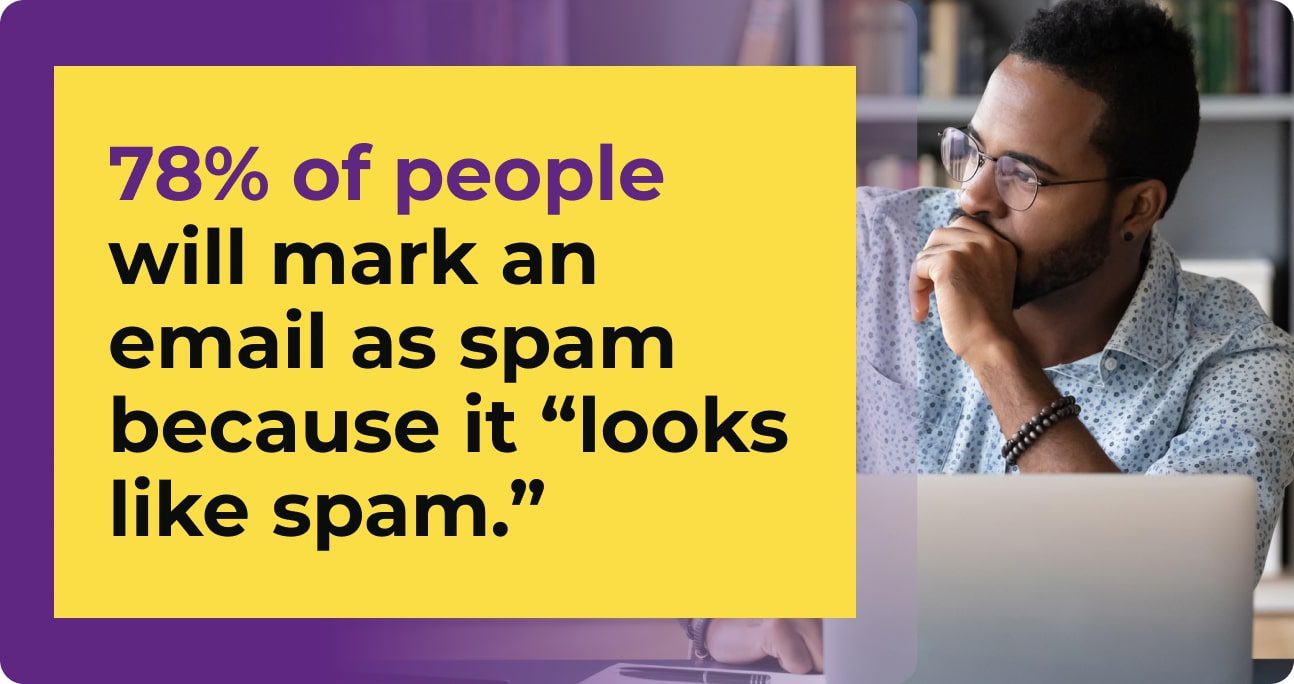
How Long Should Marketing Emails Be? Here’s the Ideal Email Length – With Examples
If there’s ever been a marketing channel that depends on the details, it’s email. You probably pay attention to so many things before you hit Send. Copy, design, sending day and time, email list quality – all of these aspects matter. But how long should marketing emails be?
This article was update in October 2023.
Email length is an aspect that often gets overlooked.
Should your marketing emails be short and sweet or meaty and lengthy?
Does it depend?
Does it even matter?
In this article, we’ll take a closer look, and also get the perspective of a few email marketing experts.
Table of contents
- How long are marketing emails, on average?
- How much time do people spend reading emails?
- What’s the ideal email length?
- Determine your ideal marketing email length with A/B testing
- “Shorter emails certainly perform better for us”
- Don’t become too rigid with your email word count
- Ultimately, subscribers may decide email length
- People do prefer shorter emails
How long are marketing emails, on average?
We’re not the first ones trying to determine what the ideal email length is.
AWeber’s data scientists analyzed 1,000 emails from 100 successful marketers. These pros engage thousands of people and generate millions in revenue.
So, what did AWeber find?
On average, marketing emails have 434 words and take about 3.3 minutes to read.
However, more than half of the emails they analyzed had 300 words or less. With inboxes so crowded, it makes sense that most marketers choose brevity.

So, how long should your marketing emails be?
Your message and your audience should determine that.
Like most things in business, your subscribers’ preference and needs are primary. If you’re in the business of selling information or courses, your readers may be looking for more in-depth emails. On the other hand, if you’re selling mail-order popcorn, people probably want you to get to the point.
No matter the length of your marketing emails, few readers tolerate writing that meanders needlessly.
So, always be asking yourself, could this be said with fewer words? Your readers will appreciate that and may reward you by reading your copy.
How much time do people spend reading emails?
Now, let’s look into people’s email reading habits.
The average amount of time a person spends looking at an email after opening it is only 51 seconds, a Nielsen Norman Group study shows.
Workers receive about 121 emails per day, so it makes sense that they don’t have a lot of time to read them.
Also, consider that the average person reads at a speed of 238 words per minute. That means if someone is spending the average length of time reading your emails, that’s about 202 words.
To give you context, the last subheading and two paragraphs are exactly 100 words. But does that mean your newsletters should be 200 words?
Well, you should read on. It all goes back to knowing your audience and what they seek from you.
Related: How To Use Email Coupons to Drive More Revenue for Your Business
What’s the ideal email length?
There’s really not an answer. There are epic stories in film and in books that are long, but fascinating. Meanwhile, O. Henry will forever be known for his masterful short stories.
It’s just as true with emails.
“I once heard someone say ‘Long emails do not not convert. Short emails do not convert. It is good copy that converts!’,” Vicky Smith of Flic Email told me.
The email consultant went on to say: “So, there is a place for both long and short-form email but which format is used will depend on the type of email, the message, and the audience.”
Want some examples?
Let’s take a look at Ann Handley’s newsletter, Total Annarchy.
Wow, that’s in-depth, right? It takes Ann Handley about eight hours to create a single email. Also, she has 45,000 people on her list. If that many people stay on and enjoy her newsletter, what does that tell you?
Different strokes for different folks.
Check out this email from Brian Dean. It gets right to the point, and you can be sure that many of the recipients read every word.

At ZeroBounce, we’re mindful about the length of our marketing emails, but we don’t worry too much about it. What we focus on is the quality and relevance of our message. However, we do scrutinize every word to make sure it’s earned its keep.
Here’s an example of a recent ZeroBounce newsletter. It has 251 words, but we’ve sent shorter – and longer – emails!

The team at Reply.io has also experimented with the format and length of the company’s newsletters.
“In our experience, short and medium ones work best (two to four paragraphs) in terms of click-through rate,” says Reply’s Senior Digital Marketer Rimma Sytnik.
“But there’s one more aspect to consider: the structure of email matters just as much as its length. That is why we always try to break the text into more paragraphs and use lists,” she adds.
So, take a look at your templates – is there anything you could improve?
Determine your ideal marketing email length with A/B testing
If you aren’t sure what your audience responds to, it never hurts to segment your audience and test it out. Let “A” be a more concise email and “B” be more in-depth. Then you can continue to refine the length from there.
You might determine that your readers prefer a lengthier email. Alternatively, you may find greater engagement with very short emails.
Here’s an expert who found shorter worked better:
“I recently switched from longer emails to shorter ones as a test,” Sarah Noel Block of Tiny Marketing told me. The results were astonishing.
“My open rate went from around 25-35% on average to 50%+ and my click-through rate went from around 5% to about 15%. I think the bigger reason is that my emails are focused on one subject instead of three, so people know exactly what to click on when they open my email,” the content marketing strategist added.
“Shorter emails certainly perform better for us”
Another proponent of shorter emails is the team at email platform Mailbutler.
“We’re attentive to the length of our emails, and not only our marketing messages. We try to keep all the emails we write concise and to the point,” says content marketing manager James Alston.
“Shorter emails certainly perform better for us. This is probably a good rule of thumb to keep in mind when you’re writing your own marketing copy for messages: shorter is usually better,” Alston added.
Aside from A/B testing, it’s also a good idea to ask for direct feedback. You do allow your subscribers to reply to your emails, right? It’s the best way to show people that you respect them and value their input. Simply ask your readers what their thoughts are.
Related: How to get more responses on your survey request emails
Don’t become too rigid with your email word count
While it’s a great idea to be aware of how short or long your marketing emails are, you can also fall into the trap of becoming obsessed with your word count. Think about the personal emails you send. Sometimes you’ve only got a few things to say and get right to the point.
There are times when you have something more complicated to explain and you must go into greater detail. If you were in another nation and hadn’t written to your parents in many moons, you probably wouldn’t write:
“Hi, mom and dad, I got married. Bye!” Maybe you would, but chances are they’d have questions.
If your business was making a major policy change that affected a lot of people, or a major store was relocating, you may need to go into greater detail. Also, if you send an educational newsletter, like Ann Handley does, you’ll write more than a couple of phrases to convey something valuable.
Conversely, I’ve gotten all too many emails where I wanted to shout out: “get to the point already!”
Ultimately, subscribers may decide email length
ZeroBounce’s own Zach Nonnemacher writes the lion’s share of our informative emails. Zach makes a great case for emails that are quick and easy but leaves plenty of room for adapting to your audience’s preferences.
“I think for most people the shorter email works well. It’s less of a commitment to skim through a quick email, especially if you make the value clear from the subject line.
With that said, don’t let length stress you into tossing out a great idea. Just be conscious of how you present those words. No one has patience for a wall of text, but a nice list of highlights with great design elements can make a long email go by swiftly.
Ultimately, you need to let your subscribers tell you what works best.”
People do prefer shorter emails
Zach’s feelings that people prefer short and sweet emails is supported by a survey ZeroBounce orchestrated. In our survey, 657 respondents answered questions related to email behavior and preferences.
Here’s what we found:
- Roughly two out of three (66%) wished for shorter emails.
- Only 6% preferred lengthier emails.
- 28% could go either way as long as the content is good.

A fresh eye (or eyes) can be priceless
It’s so valuable to have a thoughtful colleague or friend review your emails before they go out. Aside from the typos, they can tell you how it looks on a variety of devices.
A lot of people will read your newsletter on their smartphone. Can someone tell you how it looks on their end before it goes out? Furthermore, they should be able to test all of the links and make sure the pictures display correctly.
Long or short, your marketing email needs to be functional. That means effective in conveying your message and leading people to your target landing pages.
Also, it needs to land in the inbox. So, before you press Send, check your email list and remove invalid, outdated email addresses.
Table of Contents
- Table of contents
- How long are marketing emails, on average?
- So, how long should your marketing emails be?
- How much time do people spend reading emails?
- What’s the ideal email length?
- Determine your ideal marketing email length with A/B testing
- "Shorter emails certainly perform better for us"
- Don’t become too rigid with your email word count
- Ultimately, subscribers may decide email length
- People do prefer shorter emails
- A fresh eye (or eyes) can be priceless






